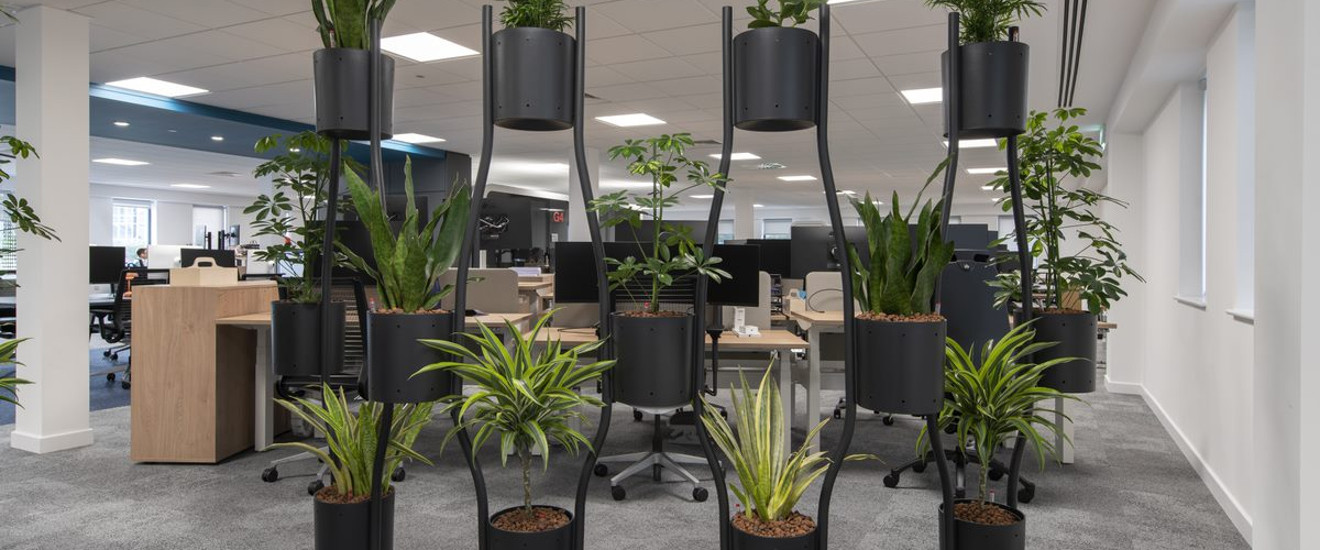Managing stress at work

National Stress Awareness Day 2016 is a time for us to reflect on how the workplace can help minimise stress levels by giving staff a relaxing, comfortable office environment.
It is essential for us, as individuals, to be able to work comfortably and ensure that we are able to easily manage our stress. Stress can affect energy, mood and productivity levels and while some stress can help us to achieve deadlines, staff need to have confidence that their workplace is able to support them and help them to maintain healthy levels of stress.
Office design can play an important role in protecting staff well-being and also promoting positive mental health in the workplace and these are some of the trends that workplaces can implement to ensure staff have a positive mental and physical well-being when in the office.
Exercising at work
Regular exercise is one of the best remedies for stress so there are plenty of ways to help your employees to stay physically and mentally healthy. By encouraging staff to hold after work running clubs or other fitness sessions is an easy way to bring staff together and help them to reduce their stress. Offices are providing staff with more wellbeing facilities, such as showers and lockers, to enable staff to lead more active lifestyles and these changes have a positive impact on mood and creativity.
Even if you can’t fit an entire workout into your working day, making sure you take trips away from your desk at lunchtime will give you valuable time to unwind and relax so you can focus more clearly for the time you do spend at your desk.
Healthy eating
Some companies offer staff free fruit and even provide a free breakfast once a month to inspire staff to be more conscious about their own wellbeing and what they are eating while at work. By making it as easy as possible for staff to blend their work lives and their daily routine, their well-being will stay at a good level. Giving staff the correct facilities to maintain a balanced diet will help ensure they are eating healthy, fresh food that has a positive impact on their energy levels and mood.
Offices should have a big, open tea point area and a kitchen space that allows staff to prepare and eat fresh meals for breakfast and for lunch. Access to hot and cold drinks also means that they get up from their desks more often and stay hydrated and refreshed throughout the day.
Efficient space planning
When designing your office layout, you need to think about which departments work together the most and which environments are the loudest and most disruptive. Something as simple as a strategic office space planning will position teams correctly, improve communication between staff and help to build a supportive, trustworthy office environment.
An effective office layout gives staff everything they need to do their job as quickly and as easily as possible. By having teams located strategically in your office, staff can manage time more effectively and have more control over their projects.
Tranquil spaces
Each member of staff has a preferred way of working, so it is essential to address the needs of all individuals. The office can be a disruptive environment which can contribute to stress levels, especially if you have a deadline to hit.
Staff need to have a place to retreat to from the shared and open work areas and take a break from the noise. Staff that have the option between collaboration areas and private focus spaces are able to manage their stress levels better as the office is a more comfortable, supportive place to be. Taking time away from the desk throughout the day shouldn’t be seen as an unproductive thing to do, in fact, it can help improve focus and enhance the quality of your work!
Nature and greenery
Plants brighten up an office, but their benefits go much further. An article by Dr. Leonard Perry, Extension Professor of the University of Vermont, entitled “Plants at Work, Indoors" reports on a study that showed adding plants to an office, helped reduce stress by 12% and staff absence dropped by 14%. In addition, according to the Journal of Experimental Psychology, researchers from Cardiff University in 2014 monitored two large commercial offices in the UK and Holland. After plants were brought in, overall productivity improved by 15% within three months.
Place large, easy-care plants around the office to add colour to the workplace and also offer an alternative way to divide work areas. Consider how you can incorporate biophilic design in an office, as we did with JustGiving and Essence. The incorporation of nature-inspired materials and elements can help create more positive working environments that stimulate the senses - increasing focus and productivity, sparking creativity and reducing stress.
Managing stress at work
Office design plays an important role in helping to manage stress levels at work, as badly designed offices don’t give staff enough freedom to manage their workloads, preventing them from being efficient and productive when they are in the office. The opportunity for staff to work away from their desk should be seen as positive as it allows staff to prioritise their time and not become consumed by the work they are doing, quick breaks away from the desk are essential. Giving staff the right facilities to enable them to be comfortable and feel like they are in an enriching environment will stop unneeded stress at work.

Start your workplace transformation today.
Your workplace holds enormous potential to improve your business performance. Get in touch today, and we will unlock that potential together.
